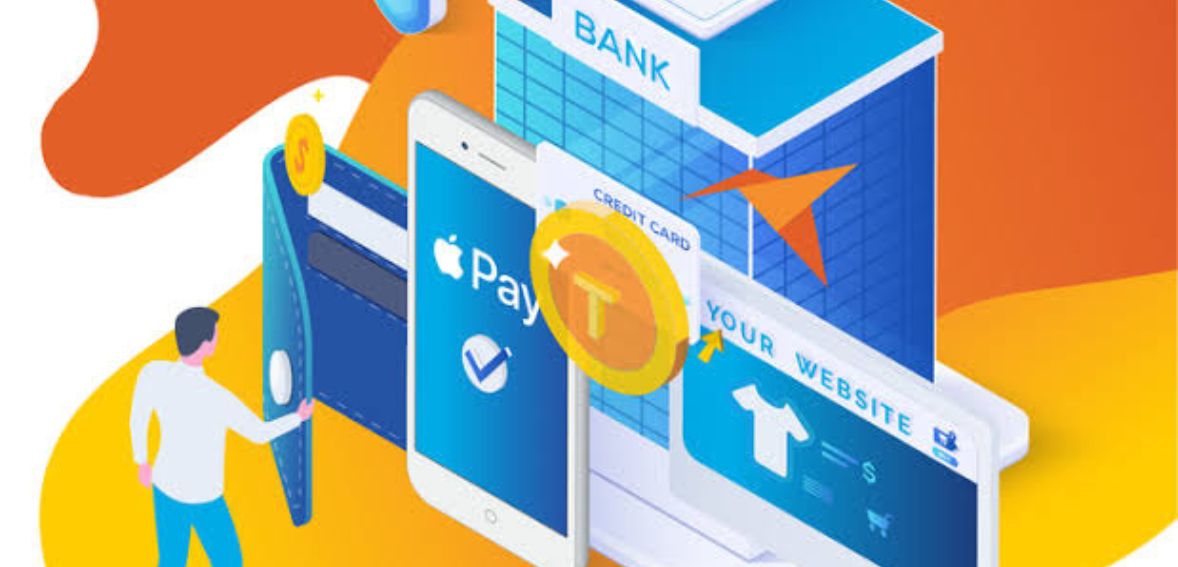
By Isabella Richards May 31, 2025
Apple Pay has become one of the most widely used digital wallet options for both consumers and businesses in a time when speed and convenience drive consumer behavior. Since Apple Pay is used by millions of iPhone users worldwide to swiftly and securely complete transactions, it makes sense for contemporary businesses to accept this form of payment.
However, the expense of Apple Pay is a major worry for many business owners. Before implementing Apple Pay in your store, whether it’s an online store or a physical location, it’s important to comprehend the costs and fees involved. This article examines Apple Pay’s different fees, their structure, and the things business owners should know about this popular contactless payment method.
Understanding How Apple Pay Works for Businesses

As a digital wallet, Apple Pay enables users to store their credit and debit cards on Apple devices and pay with apps, websites, or near-field communication (NFC) technology. Apple does not impose any additional fees on the company that receives the payment for the transaction.
Rather, Apple Pay functions as a middle layer, protecting cardholder data throughout the transaction through secure data transfer and tokenization. A company’s current point-of-sale system or payment gateway is integrated with the entire payment process. It’s crucial to realize that accepting Apple Pay entails knowing how your merchant account and payment processor handle these transactions rather than paying Apple directly.
Are There Direct Apple Pay Fees?
New business owners frequently believe that Apple charges a fee to merchants for each Apple Pay transaction. In actuality, Apple does not impose any particular fees on retailers in exchange for their acceptance of Apple Pay. As a digital pass-through system, Apple Pay charges fees that are already imposed by payment processors, banks, and card issuers.
Therefore, the cost structure is still bound by your merchant agreement even though the payment interface may change. This implies that using Apple Pay does not result in any payment to Apple. Rather, you pay the standard transaction fees linked to the credit or debit card that was used to fund the Apple Pay wallet. This does not imply that there are no expenses, though. The fees are simply included in the current payment processing model, making it important to look more closely at what that includes.
Typical Merchant Fees for Apple Pay Transactions
Businesses that accept Apple Pay still have to pay standard credit card processing fees even though Apple doesn’t charge a separate fee. Interchange fees, assessment fees, and processor markups are the three main categories into which these fees fall. The card networks, such as American Express, Mastercard, Visa, and Discover, determine exchange fees.
The type of card (rewards cards, corporate cards, debit vs. credit), the type of transaction (online vs. in-person), and the merchant category all affect these fees. Interchange fees typically fall between 1.5% and 3.5%. The card networks impose assessment fees, which are typically substantially lower and range from 0.13% to 0.15% of the total transaction value.
Lastly, merchant service providers, Square, Stripe, and other payment processors tack on their own markup. The provider and the type of account setup (flat-rate, interchange-plus, or tiered pricing) have a significant impact on this. In addition to interchange and assessment fees, these fees may range from 0.15% to 0.50%. Therefore, even though there isn’t a “Apple Pay fee,” a company may have to pay 1.7% to 3.5% for each transaction, depending on the processor and the card being used. Still, checkout experience improvements make Apple Pay an appealing option for many businesses.
In-Person vs. Online Apple Pay Transactions
The total fees a merchant may incur are also influenced by the type of Apple Pay transaction, whether it takes place online or in-store. Since in-person Apple Pay payments are regarded as card-present transactions, which typically carry lower risk and consequently lower fees, they are typically more economical for the company.
For instance, when a consumer uses a contactless terminal to pay with Apple Pay in a physical store, the transaction is handled as though the card were present. Because there is less chance of fraud, this could result in a lower interchange fee and a lower processor markup. However, using Apple Pay on a website or mobile app is regarded as a card-not-present transaction. Because there is a greater chance of fraud, this classification frequently results in higher interchange fees. Companies might see fees closer to 2.9% or even higher for eCommerce Apple Pay transactions, especially if their processor uses flat-rate pricing.
Platform-Specific Pricing: What Stripe, Square, and Others Charge

Every payment platform charges based on its own models and integrates Apple Pay in a different way. For example, when using Apple Pay to make online payments, Stripe charges 2.9% + 30¢ for each successful transaction. When paying with Apple Pay in person, Square normally charges 2.6% + 10¢. Instead of listing a “Apple Pay fee,” these platforms charge their regular prices for Apple Pay transactions.
This makes Apple Pay as affordable—or expensive—as your choice of payment processor. Before integrating Apple Pay, businesses should thoroughly compare providers, taking into account the number and value of transactions they handle each month. Compared to using a flat-rate processor like PayPal or Square, interchange-plus pricing from a specialized merchant services provider may be more affordable for high-volume retailers.
Tokenization and Security Benefits with No Extra Cost

Apple Pay’s secure architecture is one of its hidden benefits. Tokenization is used by Apple Pay to safeguard the card number during transactions, adding an extra degree of security against fraud. In certain situations, this lowers the merchant’s liability and leads to fewer chargebacks.
Tokenization substitutes encrypted codes (tokens), which are exclusive to the merchant and can only be used for a particular transaction, for actual card numbers. Cybercriminals cannot use the data, even if it is intercepted. These security advantages can lower long-term operating costs related to chargeback handling and fraud mitigation, even though they do not directly lower the fees.
Is Accepting Apple Pay Worth the Cost?
The advantages of taking Apple Pay for most companies exceed the costs of processing credit cards. The inability to provide Apple Pay may cause customers to switch to competitors who do, as consumer demand for contactless payments rises. Furthermore, Apple Pay facilitates quicker checkout times, raises customer satisfaction levels, and lessens payment process friction.
Additionally, as digital wallets gain popularity, allowing Apple Pay can help your company prepare for the future. Lack of Apple Pay could lead to lost sales and a bad customer experience for companies that serve younger, tech-savvy customers or are located in busy areas.
Equipment and Setup Costs
Setting up to accept Apple Pay may require software or hardware upgrades, even though Apple does not charge fees directly. To accept Apple Pay in-store, retail establishments need to have point-of-sale (POS) systems that support NFC. You might need to spend $100 to several hundred dollars on new equipment if your terminal is out-of-date or does not support NFC.
Software development time and expenses might be necessary if you’re incorporating Apple Pay into your eCommerce website or app. Depending on the degree of customization you need, platforms such as Shopify, WooCommerce, and BigCommerce can integrate Apple Pay through payment gateways, though the cost and complexity can vary.
Chargebacks and Dispute Resolution
It’s crucial to realize that chargebacks are still possible with Apple Pay. However, a layer of security that reduces the likelihood of fraudulent disputes is added by the use of biometric authentication, such as Face ID or Touch ID. Despite Apple Pay’s security, the merchant must adhere to the standard chargeback procedures if a customer contests a charge because the underlying card network rules still apply.
It is still crucial to have solid proof, such as signed invoices, digital receipts, or proof of delivery. For Apple Pay transactions, certain payment processors provide improved security features that can be useful for businesses that frequently receive returns or fraud.
Tips for Reducing Apple Pay-Related Processing Costs
Although processing fees cannot be completely eliminated, you can minimize their negative effects on your bottom line by optimizing your Apple Pay transactions:
- If you process a lot of transactions, choose a processor with interchange-plus pricing instead of flat-rate.
- Promote the use of Apple Pay in person, as it entails less risk and frequently has lower costs.
- Based on your monthly volume and average transaction size, bargain with your payment processor for reduced fees.
- To prevent liability shifts and chargebacks related to fraud, make sure your terminals adhere to EMV and NFC standards.
- Steer clear of using expensive third-party platforms to process Apple Pay, particularly when making purchases online.
Aligning Fees with Customer Expectations
Apple Pay takes care of speed, security, and privacy—all of which are critical in today’s consumer world. Consumers who use digital wallets anticipate smooth mobile payment options from businesses and are frequently willing to spend more per transaction. The extra money and improved customer satisfaction may offset the slightly higher fees you pay for some transactions.
Furthermore, a lot of customers believe that Apple Pay is safer than conventional card swipes. Your company’s reputation and customer retention can be enhanced by linking your brand to modern technology and trust. Offering Apple Pay could establish you as progressive and customer-focused, particularly in sectors like retail, healthcare, beauty, and hospitality.
The Future of Digital Wallet Fees

More companies will probably incorporate mobile payment systems like Apple Pay as contactless payments continue to gain traction. Trends in the industry point to a sustained shift toward competitive transaction fees and streamlined pricing structures. Early adopters may be in a better position to bargain with processors for reduced prices or obtain volume discounts. Convenience, security, and speed will ultimately continue to be rewarded by the market. Companies that comprehend Apple Pay’s entire fee structure and adjust their payment processing approach appropriately will discover that the advantages extend beyond just financial gains.
Conclusion: Knowing the True Cost of Apple Pay
Every transaction involves processing fees, even though Apple Pay does not directly charge merchants. These are determined by the merchant’s payment processor, card networks, and issuing banks. When businesses accept Apple Pay, they must take interchange, assessment, and processor markup fees into account.
Understanding the context is essential for cost optimization and decision-making, even though these fees might seem to be the same as regular credit card processing fees. It’s difficult to overlook Apple Pay’s advantages in terms of security, speed, and customer preference.
Apple Pay provides a useful tool for improving customer experience and expediting transactions at little to no extra cost above what companies already pay to accept cards. Putting money into the necessary infrastructure to accept Apple Pay could result in higher customer loyalty and long-term operational efficiency.